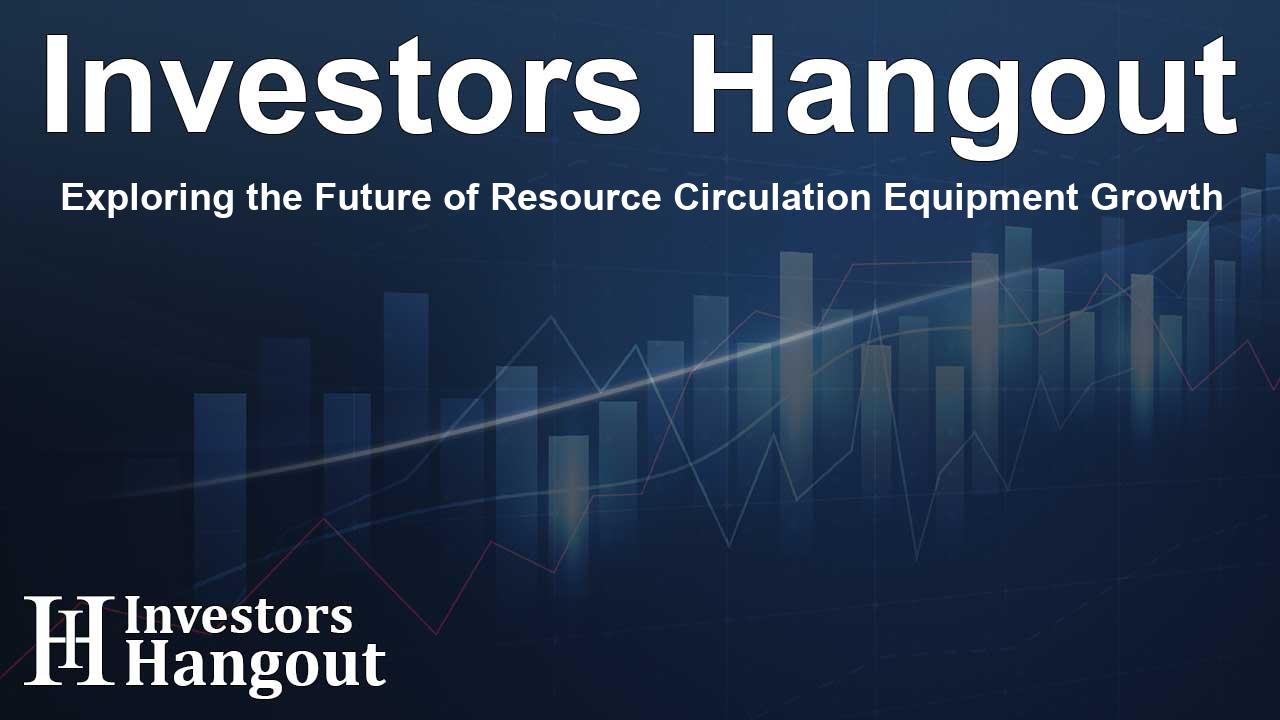Exploring the Future of Resource Circulation Equipment Growth

An Overview of the Resource Circulation Equipment Market
The Resource Circulation Equipment Market is on a meteoric rise, with valuations projected to hit USD 48.42 billion by 2032, showcasing a remarkable compound annual growth rate (CAGR) of 8.25% from 2025 to 2032. This surge is primarily propelled by widespread initiatives aimed at industrial waste minimization.
Driving Forces Behind Market Growth
Governments and industries are increasingly adopting stricter circular economy mandates that focus on resource efficiency. This evolution has stimulated robust demand for advanced waste management solutions like balers and shredders. For instance, in the U.S., the Environmental Protection Agency noted an alarming figure of over 292.4 million tons of municipal waste in recent years. Such figures inevitably drive innovation and investments in smart recycling technology.
Innovations Enhancing Recycling Solutions
The demand for smarter recycling equipment has also been amplified by digital transformation initiatives currently reverberating through various sectors. Major players are investing heavily in IoT-capable balers and automated sorting systems. Companies such as Harris Equipment unveiled IoT-enabled balers that cater to the shifting landscape of industrial waste management.
Regional Insights: The U.S. Market Perspective
In the U.S., the Resource Circulation Equipment Market is valued at approximately USD 4.18 billion and is projected to escalate to USD 8.20 billion by 2032 with a projected CAGR of about 8.79%. This growth is supported by various factors including the implementation of recycling goals endorsed by the Environmental Protection Agency, as well as corporate commitments towards achieving zero waste.
Key Contributors to Growth
Notable companies within the U.S., such as CP Group and SSI Shredding Systems, are at the forefront of developing automated recycling solutions. Additionally, the U.S. Department of Energy has introduced a Circular Economy Roadmap that paves the way for increased market demand.
Market Segment Analysis
Several crucial segments are driving the Resource Circulation Equipment Market:
Product Segmentation
Among various products in the market, the baler press segment has demonstrated substantial dominance, capturing a 25% market share. This can be attributed to the balers’ extensive application across automotive and retail industries, where they are used primarily for minimizing scrap volume and transport costs. Innovations like fully automated balers introduced by American Baler Co. have further spurred market growth.
Application Segmentation
The Electrical & Electronics segment is another key area of dominance, accounting for a 34% market share in resource circulation. This growth is stimulated by the urgent need to address rising volumes of electronic waste, with over 7 million tons generated in North America, coupled with regulations demanding compliance for responsible waste management.
Geographical Trends
Asia Pacific leads the market with a notable 39% market share, attributed to extensive investments in recycling initiatives, particularly in countries like China, Japan, and South Korea. This region has witnessed a substantial push in equipment installations, driven by government policies aimed at bolstering the circular economy.
Technological Advancements
Local firms are progressively adopting AI-driven solutions to enhance sorting systems and recycling capabilities. This commitment to innovation positions Asia Pacific as a leader in sustainable waste management technologies.
Recent Developments in the Market
Significant advancements have occurred recently; for instance, Metso’s acquisition of TL Solution’s recycling operations has strengthened their service offerings, promoting sustainable metal recovery solutions for various applications.
Conclusion: The Path Ahead
The Resource Circulation Equipment Market is poised for exciting transformations in the coming years. With key manufacturers investing heavily in R&D, exploring energy-efficient and technologically advanced solutions, the future of this market looks promising.
Frequently Asked Questions
1. What are the key growth drivers for the resource circulation equipment market?
The key growth drivers include stricter policies on waste management, technological advancements in recycling solutions, and rising awareness towards sustainability and circular economy initiatives.
2. Which regions are leading the resource circulation equipment market?
Asia Pacific is currently the leading region, accounting for 39% of the market share, followed by the U.S. and European regions.
3. What is the CAGR for the resource circulation equipment market?
The market is anticipated to grow at a CAGR of 8.25% from 2025 to 2032.
4. How has the electronic waste segment influenced market trends?
The electronic waste segment has significantly influenced market trends by necessitating advanced recycling technologies to comply with stringent regulations on e-waste management.
5. What innovations are shaping the future of the market?
Innovations such as IoT-enabled recycling equipment, automated sorting systems, and energy-efficient machines are central to the evolving landscape of the resource circulation equipment market.
About The Author
Contact Lucas Young privately here. Or send an email with ATTN: Lucas Young as the subject to contact@investorshangout.com.
About Investors Hangout
Investors Hangout is a leading online stock forum for financial discussion and learning, offering a wide range of free tools and resources. It draws in traders of all levels, who exchange market knowledge, investigate trading tactics, and keep an eye on industry developments in real time. Featuring financial articles, stock message boards, quotes, charts, company profiles, and live news updates. Through cooperative learning and a wealth of informational resources, it helps users from novices creating their first portfolios to experts honing their techniques. Join Investors Hangout today: https://investorshangout.com/
The content of this article is based on factual, publicly available information and does not represent legal, financial, or investment advice. Investors Hangout does not offer financial advice, and the author is not a licensed financial advisor. Consult a qualified advisor before making any financial or investment decisions based on this article. This article should not be considered advice to purchase, sell, or hold any securities or other investments. If any of the material provided here is inaccurate, please contact us for corrections.
